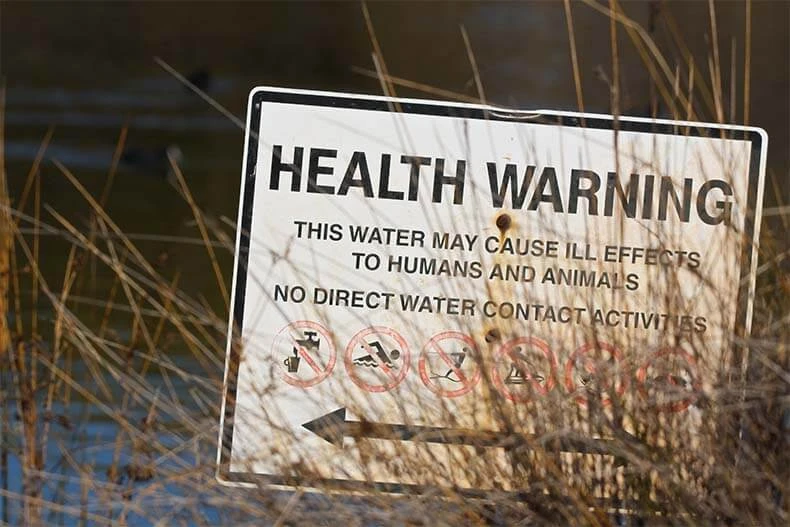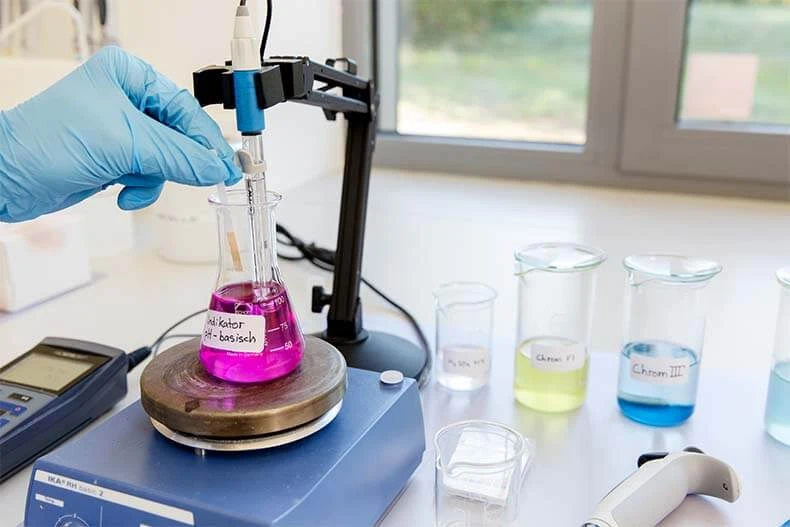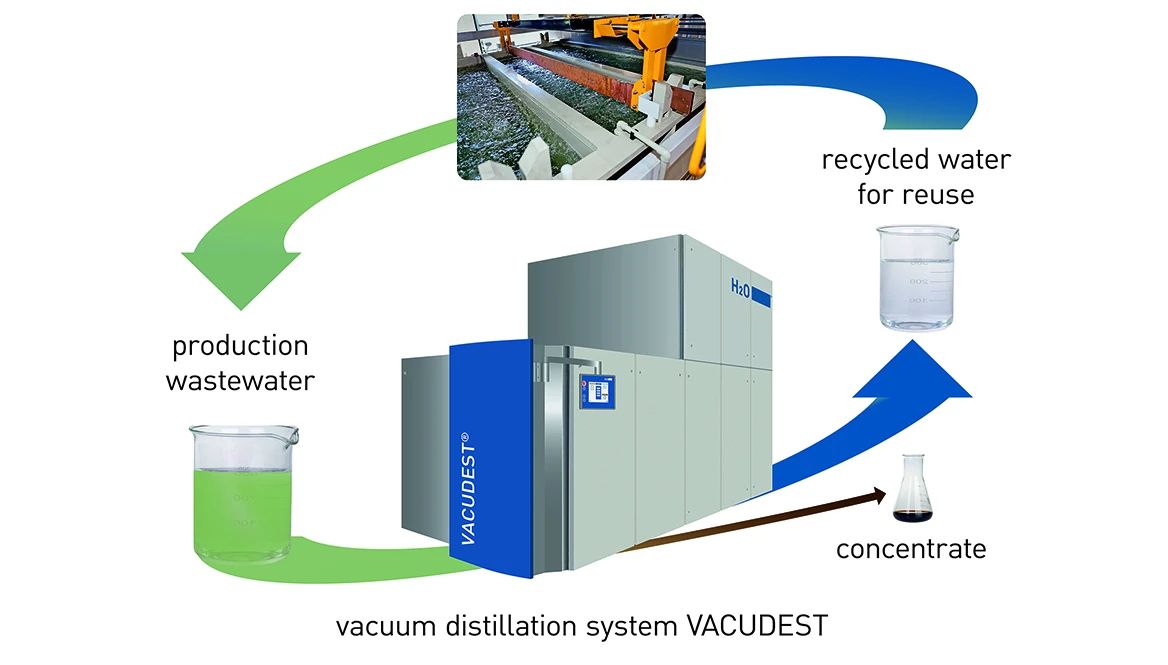Contact us
How much of the world's water pollution is caused by industry? A very considerable amount. Industry accounts for about 20 per cent of the fresh water withdrawn worldwide. This water is used in production and becomes polluted. In many cases it is properly cleaned by industrial wastewater recycling systems and is sometimes reused or disposed of in an environmentally friendly way. In some areas of the world, however, it is discharged untreated into nearby public waters. It is not without reason that factories are still mainly located near rivers, lakes and seas.
How does industrial waste cause or affect water pollution? The production of all kinds of industrial goods generates wastewater that can be contaminated with toxic substances.
In Europe, there have been strict limits for decades that industries must observe when discharging wastewater into public networks so that industry does not become the cause of water pollution. Therefore, wastewater must be treated or clarified before it can be discharged into the sewage system or rivers.
But especially in emerging countries such as China, India, Africa or South America, where the number of industrial plants has only just begun to grow in recent years, environmental policy has not yet reached this stage. Although the cause of water pollution in lakes and rivers is clear, and in some cases even stricter environmental limits apply than here, the implementation and monitoring of the legislation is not carried out consistently. Because of this, the illegal discharge of wastewater from industry into rivers and lakes is part of everyday life.
In the USA, there are also laws against water pollution, but they do not cover all types of industrial waste water pollution. According to an official American study from 2009, about 44 per cent of assessed streams, 64 per cent of lakes and 30 per cent of bays and estuaries are still classified as polluted.1
This discharge of residual pollution into public waters has serious consequences. Many of the hazardous substances from industry are difficult to biodegrade and therefore accumulate in water sediments. The consequence of this industrial waste water pollution: fish, crustaceans and other creatures become ill, and some die. Biodiversity suffers.
Through cracks in the ground, the polluted water from rivers and the contaminants from the water sediments get into the groundwater - and thus into the drinking water.
Nature conservation organisations like Greenpeace also draw attention to the consequences of industrial waste water pollution, also using the example of the carcinogenic hazardous substance chlorobenzene. Chlorobenzene is used as a solvent in the textile industry and is also produced as an intermediate product in the manufacture of insecticides, dyes, pharmaceuticals and fragrances. In the USA, it is used in the production of grinding wheels. The hazardous substance is increasingly detected in food and accumulates in our bodies in fatty tissue and the liver; it is also found in breast milk. It is consumed either directly through contaminated drinking water or indirectly through meat from animals that have consumed contaminated drinking water.

Health Warning: Polluted water makes people sick – not just animals.
© michaelgeorgeau - iStock
Industrial waste and water pollution can contain many different substances. The composition of industrial wastewater (link to article industrial wastewater) depends on its origin from production. Often there is a mix of toxic substances.
In the production of pharmaceutical and chemical substances, wastewater contaminated with active pharmaceutical ingredients is produced, especially from cleaning the production facilities. Often, biological wastewater treatment is out of the question because the substances are not biodegradable and even favour the formation of antibiotic-resistant microbes. Typical examples of such water contamination would be:
The impurities in the wastewater from the metal processing industry can consist of lubricants, mainly mineral oils, which cause a high COD value.
In electroplating, it is highly polluted active baths, contaminated by heavy metals such as zinc, nickel, copper or cadmium.
There are many types of water pollution, the main industrial waste of water pollution are the following:
All these production materials and residues create pollutants in wastewater that can have far-reaching consequences for the environment and human and animal health. If this polluted wastewater is not disposed of properly or discharged in a purified form, it can have legal and economic consequences for the companies responsible.

In the laboratory, water contamination can be detected using an indicator.
© H2O GmbH
Worldwide, water pollution is declining thanks to appropriate environmental legislation. In the USA, much has improved since the Clean Water Act (CWA) was passed in 1972, especially in the treatment of industrial wastewater.2
Compliance with the law is ensured above all by new technologies that enable companies to implement sustainable and economical industrial wastewater recycling systems.
How to prevent industrial waste water pollution? What is the solution for industrial waste water pollution? To recycling the industrial waste in water! There are various ways to use wastewater systems for your own production. Depending on the type of pollution, the amount of wastewater and the quality required, membrane systems (high wastewater quantity) or vacuum distillation systems (high treatment quality) can be the solution to further water pollution from industrial waste.
The first measure against water pollution and to implement such a closed-loop system is to identify the water streams generated in production and to have them analysed by a professional laboratory. Where can wastewater be avoided, which flows can be treated with which technologies? What are the quality requirements for the treated wastewater? The aim is to find a solution that fits seamlessly into the company's production so that the treated wastewater can be returned to production as clean water. Often this industrial wastewater recycling has not only sustainable but also medium-term economic benefits: Firstly, by saving fresh water and secondly, by saving disposal costs of the polluted wastewater.
Modern wastewater recirculation systems, such as the VACUDEST vacuum distillation system shown here, enable production wastewater to be reused and thus prevent water pollution.
© H2O GmbH
In addition, inspections by the authorities are no longer necessary - because those who do not discharge wastewater into public waters do not have to comply with environmental limits. And the fewer pollutants that end up in the environment, the healthier our waters, our animals and we ourselves remain.
Sources
1. EPA United States Environmental Protection Agency study published in January 2009.
2. EPA Report June 1998: Water Pollution Control: 25 years of Progress and Challenges for the New Millennium
You want to be part of our team and create the wastewater-free future with us?
We will tell you how!
Your contact is:
Bettina Böhringer
Human Resources
+49 7627 9239-201
career@h2o-de.com
You have questions on our VACUDEST systems?
Kindly contact us!
Your contact is:
Thomas Dotterweich
Senior Sales Engineer
+49 7627 9239-306
thomasm.dotterweich@h2o-de.com
You need consumables, spare parts or a maintenance date?
We will be pleased to assist you!
Your contact is:
Carles Fité
Technical Customer Support
+49 7627 9239-888
carles.fite@h2o-de.com